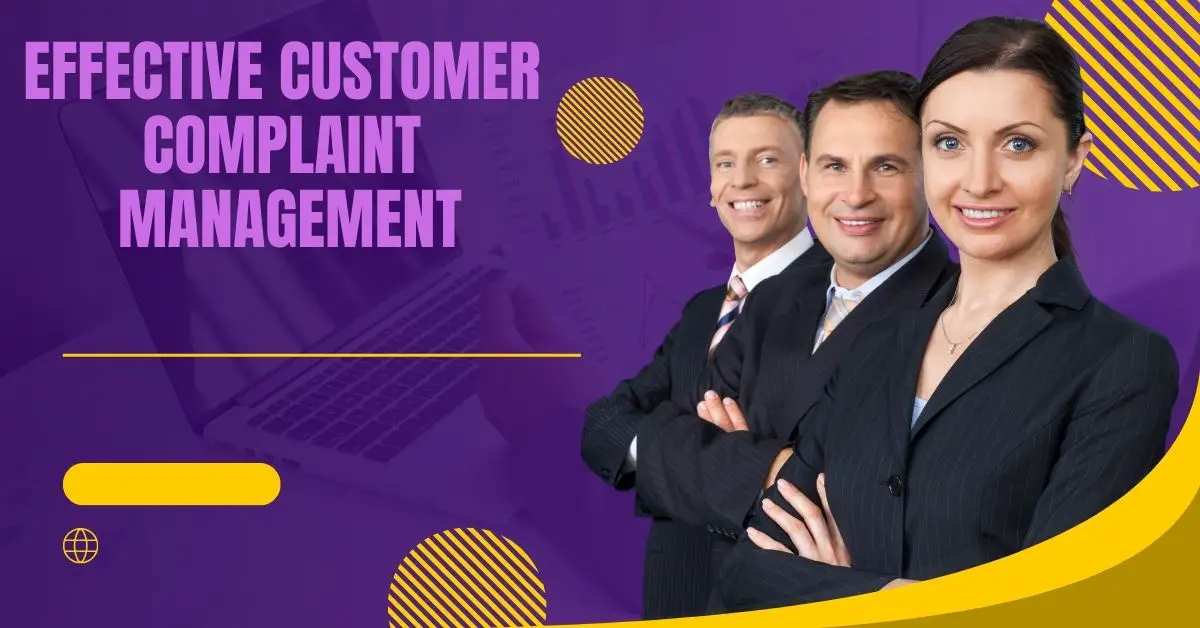Introduction
Managing customer complaints effectively is crucial for maintaining a positive reputation and fostering customer loyalty. When handled correctly, complaints can provide valuable insights into areas for improvement and opportunities to strengthen customer relationships. This comprehensive guide explores the importance of customer complaint management, and best practices for handling complaints, and answers common questions about complaint management.

Why Effective Complaint Management is Important
- Customer Retention:
- Building Trust: Effective complaint resolution builds trust and shows customers that their concerns are taken seriously.
- Customer Loyalty: Satisfied customers are more likely to remain loyal and recommend your business to others.
- Reputation Management:
- Positive Public Perception: Handling complaints professionally can enhance your business’s reputation.
- Damage Control: Addressing issues promptly can prevent negative word-of-mouth and social media backlash.
- Continuous Improvement:
- Identifying Weaknesses: Complaints highlight areas where your products, services, or processes need improvement.
- Innovation: Use feedback to drive innovation and enhance your offerings.
Best Practices for Customer Complaint Management
- Create a Complaint Handling Policy:
- Clear Guidelines: Develop clear guidelines for handling complaints, including response times and escalation procedures.
- Training: Train employees on the complaint handling policy and customer service skills.
- Make it Easy for Customers to Complain:
- Multiple Channels: Provide multiple channels for customers to submit complaints, such as phone, email, social media, and live chat.
- Accessibility: Ensure the complaint process is simple and accessible to all customers.
- Acknowledge and Respond Promptly:
- Immediate Acknowledgment: Acknowledge receipt of the complaint immediately, even if a full resolution will take time.
- Timely Responses: Aim to resolve complaints as quickly as possible to prevent escalation.
- Listen and Empathize:
- Active Listening: Listen carefully to the customer’s concerns without interrupting.
- Empathy: Show empathy and understanding, acknowledging the customer’s frustration or disappointment.
- Investigate and Resolve:
- Thorough Investigation: Investigate the issue thoroughly to understand the root cause.
- Fair Resolution: Offer a fair and appropriate resolution, such as a refund, replacement, or apology.
- Follow Up:
- Check Satisfaction: Follow up with the customer to ensure they are satisfied with the resolution.
- Seek Feedback: Ask for feedback on the complaint handling process to identify areas for improvement.
- Document and Analyze:
- Record Complaints: Maintain a record of all complaints, including details of the issue and resolution.
- Analyze Trends: Analyze complaint data to identify common issues and trends, and take proactive measures to address them.
Handling Complaints in Different Channels
- Phone:
- Personal Interaction: Provides a personal touch and allows for immediate clarification of issues.
- Empathy and Tone: Use a calm and empathetic tone, and ensure the customer feels heard and valued.
- Email:
- Written Record: Provides a written record of the complaint and response.
- Clarity and Professionalism: Respond clearly and professionally, addressing all points raised by the customer.
- Social Media:
- Public Visibility: Complaints on social media are public, requiring prompt and professional responses.
- Public and Private Responses: Address the issue publicly if appropriate, then move to private messages for detailed resolution.
- Live Chat:
- Real-Time Resolution: Allows for real-time resolution of issues.
- Prompt Responses: Ensure prompt and clear responses to avoid customer frustration.
FAQs
Q1: How should I handle aggressive or rude customers?
- A: Stay calm and professional, listen to their concerns, and try to de-escalate the situation. If necessary, involve a supervisor or manager.
Q2: What should I do if I cannot resolve a complaint immediately?
- A: Acknowledge the complaint, explain the steps being taken to resolve it, and provide a timeline for resolution. Keep the customer informed throughout the process.
Q3: How can I prevent recurring complaints?
- A: Analyze complaint data to identify common issues, address root causes, and implement preventive measures.
Q4: Is it necessary to follow up after resolving a complaint?
- A: Yes, follow-up ensures the customer is satisfied with the resolution and shows that you value their feedback and business.
Q5: How can I use customer complaints to improve my business?
- A: Complaints provide valuable insights into areas for improvement. Use this feedback to make necessary changes to your products, services, or processes.
Conclusion
Effective customer complaint management is essential for maintaining a positive reputation, enhancing customer loyalty, and driving continuous improvement. By creating a clear complaint handling policy, making it easy for customers to voice their concerns, and responding promptly and empathetically, businesses can turn complaints into opportunities for growth and better customer relationships. Implementing best practices in complaint management not only addresses immediate issues but also provides valuable insights for long-term success and customer satisfaction.
